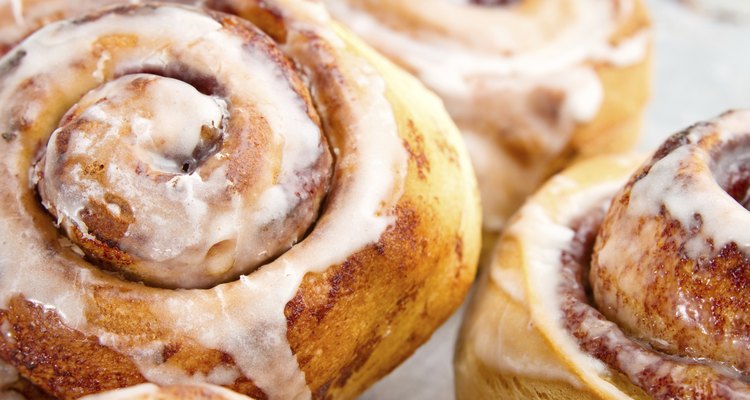
RonOrmanJr/iStock/Getty Images
The NuWave oven is a heavily marketed countertop cooker that uses a combination of convection cooking and infrared cooking to prepare foods in less time than conventional ovens. The appliance's advertising focuses heavily on preparing whole meals easily in the cooker, putting dinner on the table quickly with minimum cleanup. However, the NuWave can also be used to bake conventional treats such as cinnamon rolls.
How it Works
Conventional ovens cook foods by indirect heat, transmitted through the air from the oven's heating elements. This works well, but takes time because it's relatively inefficient. Convection cookers use a fan to circulate the hot air in the oven, shortening cooking time. The oven's broiler element goes a step further, generating such intense heat that it sears and cooks the food through infrared radiation. The NuWave oven combines these two methods, putting infrared cooking and convection cooking in a single compact countertop unit.
Baking Pan
The NuWave oven's arrangement is unconventional, and makes it difficult to use conventional baking pans. However, it will accommodate a round baking pan of up to 10 inches in diameter. The company markets a ceramic nonstick baking pan of its own, but any round cake pan or springform pan of similar size can be used. A 10-inch pan will hold four or five conventional cinnamon rolls, or up to a dozen miniatures.
Cinnamon Rolls
Prepare a batch of cinnamon rolls according to your favorite recipe, or thaw a commercial brand of frozen ready-to-bake cinnamon rolls. Cut a round of parchment paper and line the pan with it, to keep the cinnamon rolls from sticking. Fill the pan with cinnamon rolls, leaving room for each to expand. If you like your rolls wide and flat, make fewer rolls and place them further apart. If you like yours thicker, add more rolls and place them closer together.
Baking
After the rolls have risen in their pan, place the wire rack in your NuWave and place the pan of cinnamon rolls on the rack. Bake thin cinnamon rolls for 10 to 12 minutes, thicker ones for 12 to 14 minutes, until they're well risen and golden. For extra-soft crust, brush the tops with milk when they're still hot. When cool, glaze with flat icing or spread with cream cheese icing.
Related Articles
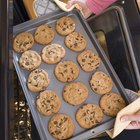
How to Cook Cakes and Biscuits in a ...
Easy Cinnamon Roll Recipe
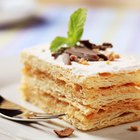
What Is Docking Used for in Baking?

Substitute for a Springform Pan

How to Delay the Baking of Homemade ...
Can You Refrigerate Homemade Yeast ...

How to Make Easy Cinnamon Rolls in 20 ...
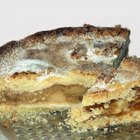
How to Bake an Apple Pie in a ...
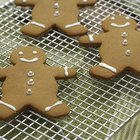
What Is a Baking Wire Rack?

Can You Bake Doughnuts Without the ...
How to Make Homemade Bread
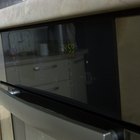
Halogen Oven Cooking Times

How to Make Thin Extra Crispy Pizza ...

What Causes Uneven Baking in Cookies?

How to Prepare Food With an Electric ...

Can I Freeze Unused Cupcake Batter?

What Kind of Pan Do You Need to Bake ...

Shortbread Cookie Recipe

How to Bake With a Pizza Screen
How to Keep Biscuits Warm in a Chafing ...
Writer Bio
Fred Decker is a trained chef and prolific freelance writer. In previous careers, he sold insurance and mutual funds, and was a longtime retailer. He was educated at Memorial University of Newfoundland and the Northern Alberta Institute of Technology. His articles have appeared on numerous home and garden sites including GoneOutdoors, TheNest and eHow.
Photo Credits
RonOrmanJr/iStock/Getty Images